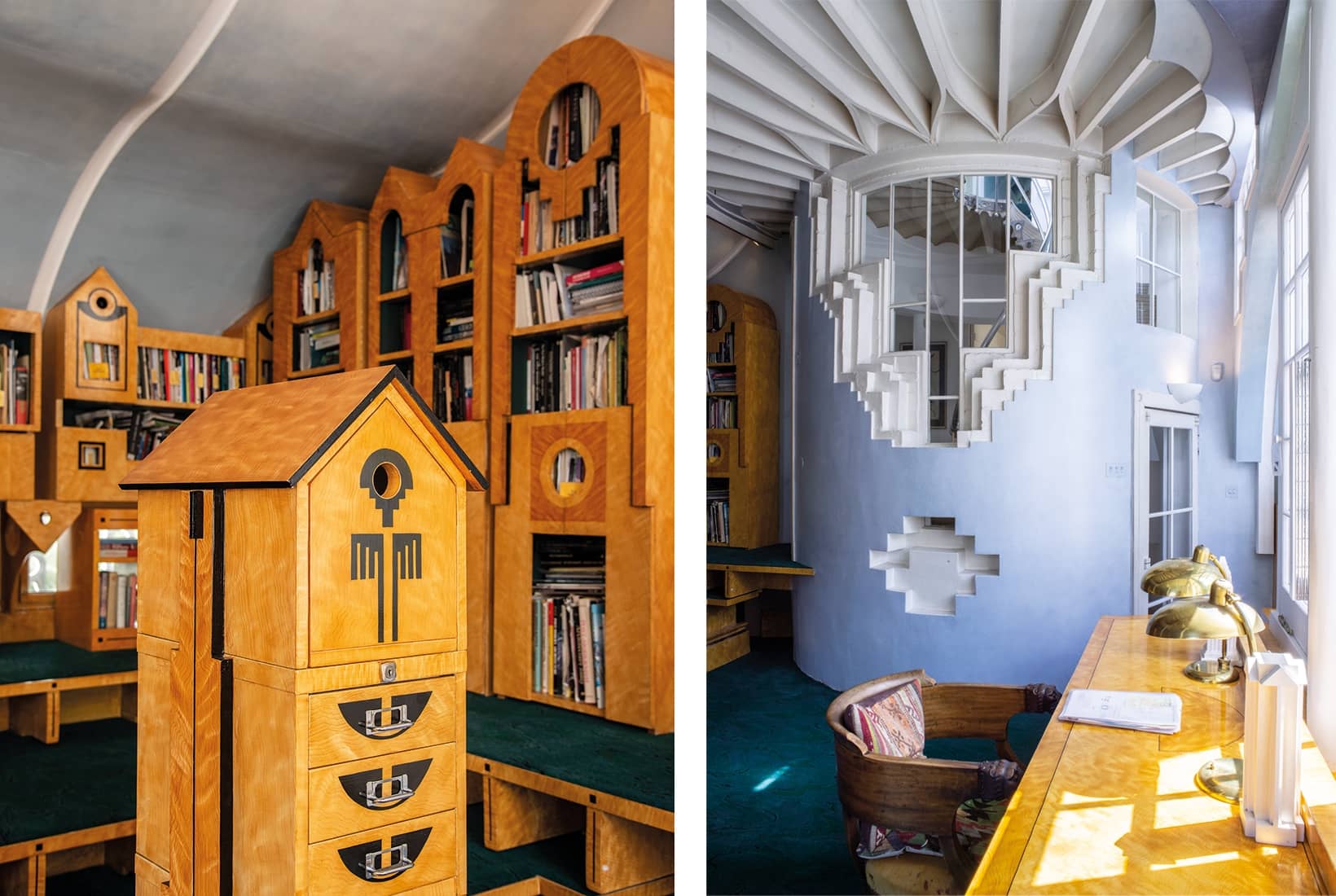An editor once told me: always look at the loos. It was remarkable, she said, how many grand cultural projets, having spent a fortune on the atrium, the concert hall, the galleries, spent pennies on the bogs.
The smallest rooms at Charles Jencks’s Cosmic House are among the loveliest loos in London with windows on to the garden and a ‘Jencksiana’ mirror over the sink. This was the Baltimore-born writer, critic and landscape designer’s take on the ‘Serliana’ window devised by the mannerist architect Sebastiano Serlio and it recurs throughout this mad and marvellous post-modern house.
Jencks died in 2019 leaving his house on Lansdowne Walk in Holland Park as a stucco memorial. From the pavement, there isn’t much to distinguish No. 19 from its 19th-century neighbours. Inside, it’s another matter. Jencks intended his house as a ‘provocation’. It tweaks the nose and digs the ribs. It is absurd and amusing, solemn and scholarly. Charles’s daughter Lily Jencks describes it as ‘a riposte to people who were fighting against meaning in architecture’. Every cornice has its story. Edwin Heathcote, author and architecture critic of the Financial Times, was anointed by Jencks as ‘Keeper of Meaning’. He has written a delightful guide to the house with a cut-out Jencksiana motif on the cover. The Cosmic House opened to the public last week and the lockers are as good as the loos.
A Borromini dome was turned upside down to make a jacuzzi. ‘It never worked,’ says Lily Jencks
The Cosmic House was the first post-modern house in Britain to be listed Grade I and while it will not be to everybody’s taste (you don’t have to be barmy to live here but it helps) it is an inspiring vision and will, in time, become as cherished a place as the Sir John Soane Museum, Charleston or Kettle’s Yard.









Comments
Join the debate for just £1 a month
Be part of the conversation with other Spectator readers by getting your first three months for £3.
UNLOCK ACCESS Just £1 a monthAlready a subscriber? Log in